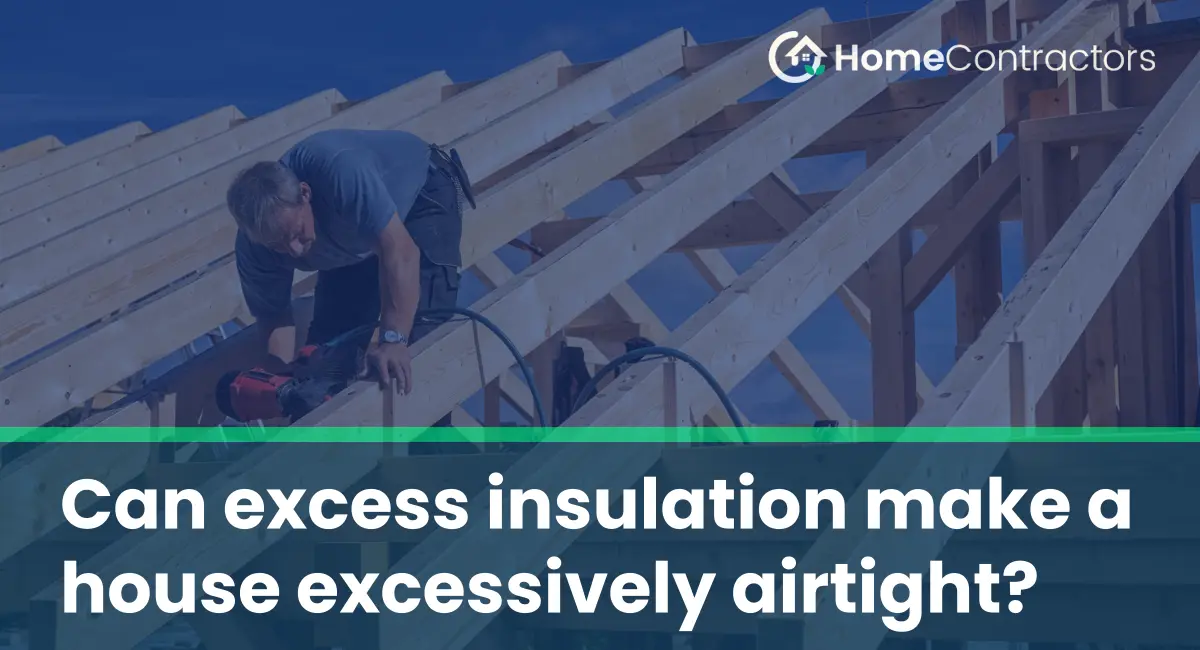Insulating a house is an essential step in creating an energy-efficient and comfortable living space. However, there is a fine balance between insulation and ventilation. While insulation helps to keep your home warm in winter and cool in summer, it is important to ensure proper ventilation to avoid trapping excess moisture and pollutants inside. This article explores whether excess insulation can lead to an excessively airtight house and the potential issues it can cause.
Understanding the Role of Insulation
Insulation plays a critical role in maintaining thermal comfort within a house. It slows down the transfer of heat between the interior and exterior, reducing energy consumption and keeping the desired temperature constant. Traditional insulation materials, like fiberglass, cellulose, and spray foam, are commonly used to line walls, roofs, and floors to retain heat or cool air.
The Importance of Adequate Ventilation
Ventilation is the process of exchanging indoor and outdoor air, removing stale air and contaminants while allowing fresh air to enter. It is crucial for maintaining good indoor air quality, dissipating excess moisture, and preventing the buildup of harmful pollutants. In a well-ventilated home, the air is constantly circulating, creating a healthier living environment.
The Danger of Excessive Airtightness
While a well-insulated home can result in energy savings and improved comfort, extreme airtightness due to excessive insulation can cause problems. A house that is too airtight may not allow for proper airflow, trapping moisture and pollutants inside. This can lead to a variety of issues, including:
- Increased Moisture Levels: Moisture generated from activities such as cooking, bathing, and even breathing can become trapped inside an overly airtight house. Without proper ventilation, this moisture can condense on surfaces, leading to mold and mildew growth, rotting materials, and potential structural damage.
- Poor Indoor Air Quality: When fresh air cannot enter the home due to excessive airtightness, indoor air pollutants such as volatile organic compounds (VOCs), allergens, and chemicals can accumulate. This can result in health issues like allergies, respiratory problems, and headaches.
- Reduced Energy Efficiency: While insulation is crucial for energy efficiency, excessive airtightness can counteract its benefits. Without proper ventilation, stale air lingers, making heating and cooling systems work harder to maintain a consistent temperature. This can increase energy consumption, leading to higher utility bills.
Finding the Balance between Insulation and Ventilation
To prevent an excessively airtight house, finding the right balance between insulation and ventilation is key. Here are some tips:
- Use the Right Insulation Thickness: Depending on your climate zone and local building codes, choose the appropriate insulation thickness. Overinsulating beyond what is required can lead to excessive airtightness.
- Incorporate Ventilation Strategies: Implementing proper ventilation strategies is essential. Consider installing mechanical ventilation systems, such as exhaust fans, air exchangers, or heat recovery ventilators (HRVs), to ensure a constant supply of fresh air.
- Attention to Air Sealing: While insulation is essential, it is equally important to ensure proper air sealing. Avoid gaps and leaks by sealing ductwork, windows, doors, and any other potential openings to maintain the integrity of your insulation while allowing controlled airflow.
While insulation is vital for a well-insulated and energy-efficient home, it is crucial to prevent excessive airtightness through proper ventilation strategies. Finding the right balance between insulation and ventilation will ensure a healthy living environment, prevent moisture-related issues, maintain indoor air quality, and maximize energy efficiency. By considering factors such as climate, local building codes, and the use of mechanical ventilation systems, you can avoid an excessively airtight house and enjoy the benefits of a well-insulated home.
